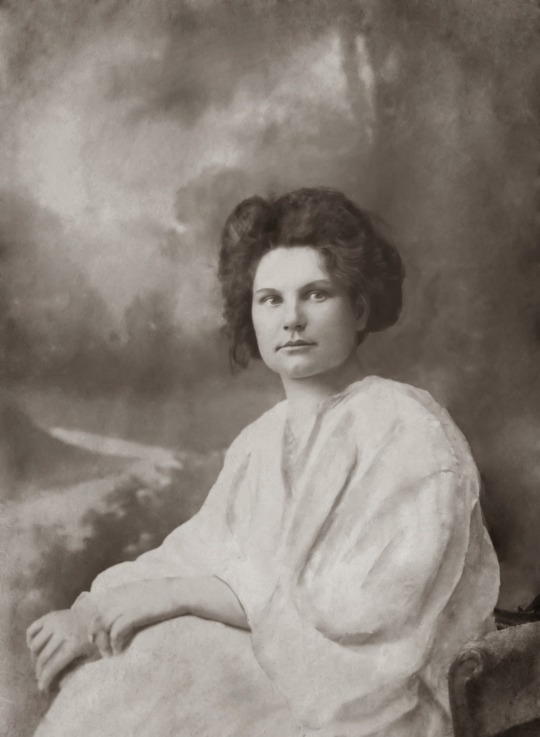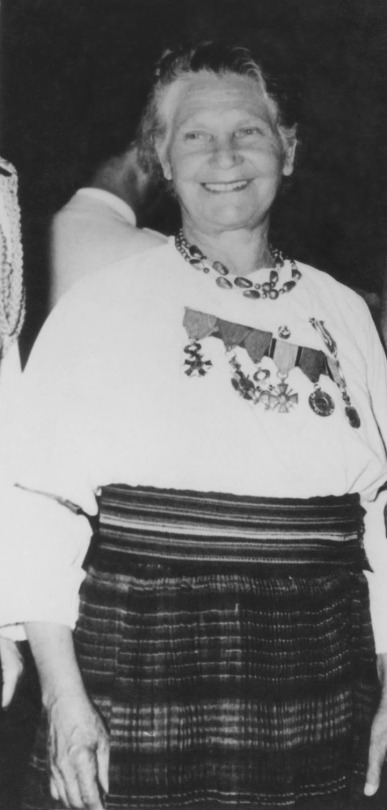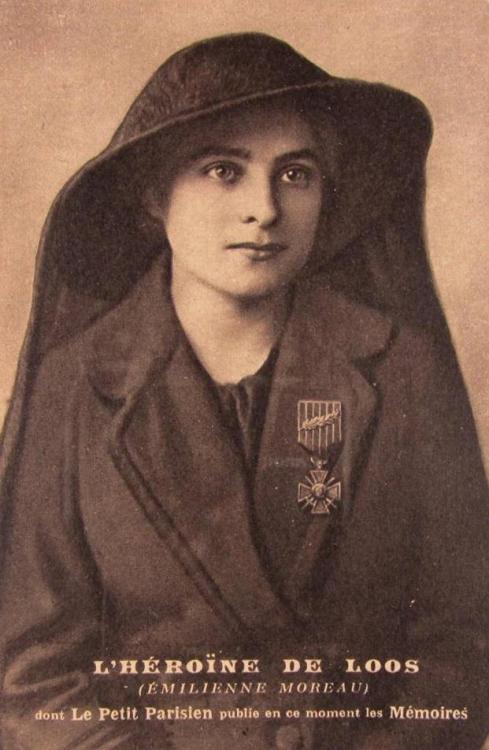#women in world war i
Milunka Savić - World War I’s most decorated woman
Milunka Savić (c.1890-1973) was born in Serbia. She took her brother’s place and enlisted in the army under the name Milun Savić during the Second Balkan War. During the Battle of Bregalnica, Milunka was leading her tenth charge at the head of a squad of men when she was wounded when an enemy grenade blew up at her feet.
Her real identity was discovered and Milunka was brought to her commanding officer who offered her to join the nursing corps. Milunka refused. She told him that she wouldn’t accept a position that didn’t allow her to bear arms to defend her country. Her superior thus promoted her to junior sergeant and allowed her to stay in the infantry.
Milunka was thus openly fighting as a woman when the First World War began. She was part of a prestigious unit nicknamed “The Iron Regiment”. During the Battle of the Kolubara river (3-9 December 1914), she single-handedly assaulted an Austrian trench, hurling grenades, and subsequently captured 20 Austrian soldiers. Milunka excelled at throwing grenades at used them to destroy the enemy machine guns. Her performance was so impressive that she was later nicknamed “The Bomber of Kolubara”. Milunka later told the press that during her childhood in the countryside, she spent a lot of time herding sheep. She and her young comrades played at hitting different targets by throwing stones. This was how she acquired her skills.
She went on to participate in several battles and fought alongside the French soldiers on the Macedonian front. In 1916, she single-handedly captured 23 Bulgarian soldiers. She was hospitalized at least 3 times and earned many awards for her performance in combat. Among the decorations Milunka received were the French Légion d’honneur, the Croix de guerre, the Cross of St. George, the Most Distinguished order of Saint Michael and Saint George and the Serbian Medal for Bravery.

(Milunka in uniform in 1917)

Milunka’s case wasn’t unique. A young woman from Belgrade named Sofija Jovanović served like her in the Second Balkan War and the First World War. Remarkably cultivated, Sofija attracted the attention of the foreign press and earned the nickname of “Serbian Joan of Arc”. She too received a number of Serbian medals for her merits.

(Sofija Jovanović)
Two school teachers named JelenaŠaulić and Ljubica Cakarevic also fought among the Serbian troops. A Slovenian woman, Antonija Javornik, was also part of the Serbian army, as was the British womanFlora Sandes .

(Jelena Šaulić)

(Antonija Javornik)
Milunka married after the war and gave birth to a daughter, but the union didn’t last long. She afterward adopted three other girls. Since she had never been to school, Milunka had to work as a cleaning lady, but faced the situation with courage and dignity. She managed to send all her daughters to school and helped thirty children, many of them from her natal village, to get a proper education as well.
During the Second World War, Milunka still found a way to help her country. She notably hid antifascists in her home and nursed them, creating a kind of secret hospital. She died in Belgrade in 1973 and was buried with military honors. A street in Belgrade is named after her.

(Milunka in 1966)
References:
Breverton Terry, Breverton’s First World War Curiosities
Larson Carmichael Jacqueline, Heard Amid the Guns, True Stories from the Western Front, 1914-1918
Toler Pamela D., Women warriors: an unexpected history
Post link
Émilienne Moreau - The heroine of Loos
Émilienne Moreau (1898-1971) was born to a family of coal miners. Her father moved to Loos-en-Gohelle where she helped him run his shop. She was 17 in when the First World War broke out and was studying to obtain the qualification for becoming a schoolteacher. The German soldiers, however, advanced toward her city. Émilienne warned the French troops of the position of the German artillery, but the French had to retreat.
The civilians began to live in difficult conditions. Émilienne’s father died due to the “privations and anguish” of the occupation. She set herself as a teacher for the local children due to the school having closed. In September 1915, the British troops approached tried to retake the town. Émilienne thus warned them of the positioning of the German defenses.
During the battle, she nursed the wounded in her house. Émilienne also took arms to defend herself. She notably threw grenades to help a fellow Scottish soldier. As she recounted in her memoirs: “I had killed men. Everything happened within minutes. I didn’t even have time to think(…)”. She grabbed a gun and killed two German soldiers who fired at her through the door.
The town was liberated and she and her family evacuated. Émilienne was awarded the Croix de Guerre from the French and received two additional medals from the British. The newspaper Le Petit Parisien also commissioned her to write her memoirs.
Émilienne didn’t give up on her dreams and became a schoolteacher. In 1932, she married Just Evrard, who was like her involved in the socialist party SFIO. In 1934, Émilienne became the Secretary General of the socialist women in the Pas-de-Calais.
As Germany invaded France again in 1940, Émilienne took the path of resistance. She pursued her militant activity and accomplished many missions in Paris, ToulouseorMarseille. She barely avoided arrestation twice in 1944 and managed to escape to London.
Back to France in September 1944, she became one of the six women to be made Compagnon de la Libération (”Companion of the Liberation”) and received the Croix de la Libération (”Cross of the Liberation”). She remained politically active and played a leading role within her party. She died in Lens, in 1971.
If you want to support me, here’s the link to my Ko-Fi
Bibliography:
Fell Allison F., Women as Veterans in Britain and France After the First World War
Malassis Frantz “Emilienne Moreau-Evrard”
Post link


